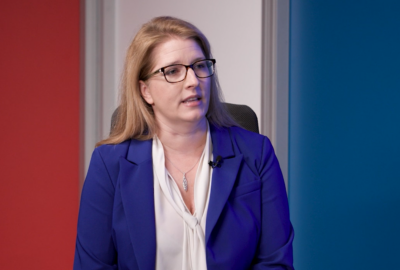Insight by Maximus
How to develop a ‘total experience’ approach to drive meaningful experiences and outcomes
Ultimately, creating modern digital services depends on understanding the linkages between user experience, customer experience, employee experience and multi-e...
Federal agencies continue to advance user and customer experience to modernize agency initiatives and service delivery to citizens, as specified in the President’s Management Agenda (PMA) and Executive Order. However, Joe Jeter proposes that agencies aim to embrace a comprehensive, or total experience approach to improve missions and citizen services from start to finish.
Essentially, total experience is about strategically interconnecting and optimizing all experiences in modern digital environments — user experience (UX), customer experience (CX), employee experience (EX) and multi-experience (MX), explained Jeter, senior managing director for federal technology at Maximus.
“I like to call it a 360-degree view of the individual interacting with the technology and the agency for maximum productivity and engagement. That’s where total experience comes into play,” Jeter said. “Think about starting with how a person interacts with technology for the purpose of being productive. Now, we want to make sure that individual is not only productive but also engaged, interested and has a high-quality experience.”
That requires ensuring that an agency understands the linkages across all experience touchpoints and adapts them appropriately to meet a customer’s needs, he said. We asked Jeter to share tips on how an agency can best approach developing a total experience (TX) philosophy and discipline.
Jeter shared three steps to move toward TX and talked about the ways that technology is and will continue to improve the government’s ability to better serve citizens and the public.
Step 1: Create a total experience oversight team
“The first thing agencies should be doing is developing steering committees that that think about the human experience as it relates to total experience,” Jeter said.
The steering committee can guide development of a TX discipline. The committee can start by identifying participants from across the organization and then taking a journey of education into information available from analysts and other organizations both in government and industry.
“That’s step one.”
Step 2: Experiment with total experience using customer-centric design
For the second step, the steering committee should define a few experience experiments the agency can undertake using human-centered design, Jeter recommended.
“That could be trying an experiment on an existing application. But what’s most important is to involve a particular team and take them through a design experience,” he said. The goal is to workshop a pain point by applying customer-centric design across the perspective of all experiences, both employees and customers.”
Jeter suggested the steering committee focus on a desired outcome — either one that the agency has been struggling with or one that has a population that the agency wants to have an impact on.
“Let’s use that case and create a pilot example of that case,” he said. “You first start out with: What are the outcomes you want? Second, what’s the effective dataset that’s going to drive the outcomes for that population? And then the third piece is, how do we look at the total experience as it relates to this pilot and work that through a human-centered or customer-centric design process?”
The agency can use the pilot to develop a deep understanding of how the technology and the process work together, Jeter added. Change management based around the customer in the center of each interaction will be part of modernizing agency services based on the experiences of the public and of government employees.
Step 3: Establish governance based on your total experience pilots
The third step is to determine the outcome guardrails — compliance around data and cybersecurity, he said.
“Data serves as the essential driver for all experiences,” Jeter emphasized. “In the context of customer-centric design, our primary considerations revolve around identifying the datasets crucial for facilitating interactions with citizens. This directly connects to cybersecurity, emphasizing the importance of safeguarding data security throughout the entire user experience.”
From total experience pilot to full-scale deployment
The TX pilots create a way to benchmark against desired outcomes. They are also “a safe and controlled place” to experiment, Jeter said. Pilots help an agency determine necessary guardrails by informing the team about problems and issues with experiences and customer journeys in advance of broad deployment or implementation, he said.
“From that informed state, you’re able to then produce and scale-up. Over the past several months, we have been working with a customer to rethink how we can create a total experience environment through our contact center offerings. Through a pilot project, we have been able to conduct a test case for new technology stack that is really going to shape the contact center of the future. We have seen what the impact can be on a smaller scale, now we have a plan for how we scale,” Jeter said.
The continued adoption of cloud along with broader use of artificial intelligence within government will also prove pivotal to modernizing digital services based on total experience.
Total experience — the true transformation for CX
Total experience transformation creates the ability to seamlessly integrate customer-centric design, data and technology, optimizing processes for a simple, seamless and secure customer experience.
“Beyond technology’s role in CX strategy, our innovation and expertise encompass customer data, the voice of the customer and various digital channels,” Jeter said.
It’s a holistic approach that provides actionable intelligence and will let agencies adapt to evolving customer needs and behaviors, he said. Plus, through customer experience as a service (CXaaS), an organization can establish a robust model for delivering TX transformation.
“The cloud is going to give us the kinds of flexibility that we’ve never had before on all aspects of developing modern systems — from the total experience down to the underlying architectures and infrastructure to delivering the data,” he said. “The cloud enables what we can do with data.”
And as for AI, it’s going to give more power to the people across an organization involved in creating and engaging with the total experience, Jeter said.
“The power is going to be more and more in their hands through the use of personalization and self-service. And we in the human-centered design space, are really going to ask: How do we use these new tools? How do we employ or deploy AI tools to give the user more power within the guidelines of compliance? AI will be more a part of human-centered design because more and more tools enable personalization and empower the user and the agent to both interface with an agency.”
Discover more about how to improve, secure and transform your federal operations in the Forward-Thinking Government series.
Copyright © 2024 Federal News Network. All rights reserved. This website is not intended for users located within the European Economic Area.
Vanessa Roberts crafts content for custom programs at Federal News Network and WTOP. She’s been finding and telling B2B, government and technology stories in the nation’s capital since the era of the “sneakernet.” Vanessa has a master’s from the Columbia Graduate School of Journalism.






